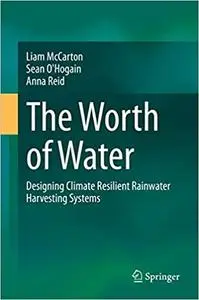Liam McCarton, Sean O'Hogain, "The Worth of Water: Designing Climate Resilient Rainwater Harvesting Systems"
English | 2021 | ISBN: 3030506045 | 234 pages | PDF | 13 MB
English | 2021 | ISBN: 3030506045 | 234 pages | PDF | 13 MB
There is no more fundamental substance to life on earth than water. Ninety nine percent of all human molecules are water molecules. Three quarter of the earth’s surface is covered by either saltwater or freshwater, yet millions face a daily struggle to access enough water for survival. The effects of ongoing climate change have expanded the water crisis to areas previously considered water secure. This book addresses the role rainwater harvesting (rwh) can play in developing a resilient water infrastructure that will prove adaptive to climate change and its implications. The book features three sections. The first section presents the concepts underpinning a new approach to water infrastructure. The term “the worth of water” was developed to reflect the importance of the social life of water. This encompasses all human relationships with water including the social, cultural, hydrological, political, economic, technical and spiritual. A technology portfolio showcasing the worth of water from the qanats of the ancient world to the modern rain cities is presented. Other concepts discussed include the circular economy of water and the concept of multiple waters for multiple users of multiple qualities. Water and its properties are a function of its peculiar molecular structure and this is illustrated in the book. Rainwater harvesting is considered by the authors as containing an inherent treatment train which functions as a complex water treatment system. The physical, chemical and biological removal mechanisms that form an inherent part of the rwh system are discussed. Part two presents a new rwh design methodology together with design templates and worked examples for the hydraulic and economic analysis of rwh systems. A state-of-the-art literature review of the potential health implications of utilizing rwh is also presented. The final section of the book discusses how rwh can play a vital role in contributing to achieving the sustainable development goals and to living within the planetary boundaries.



